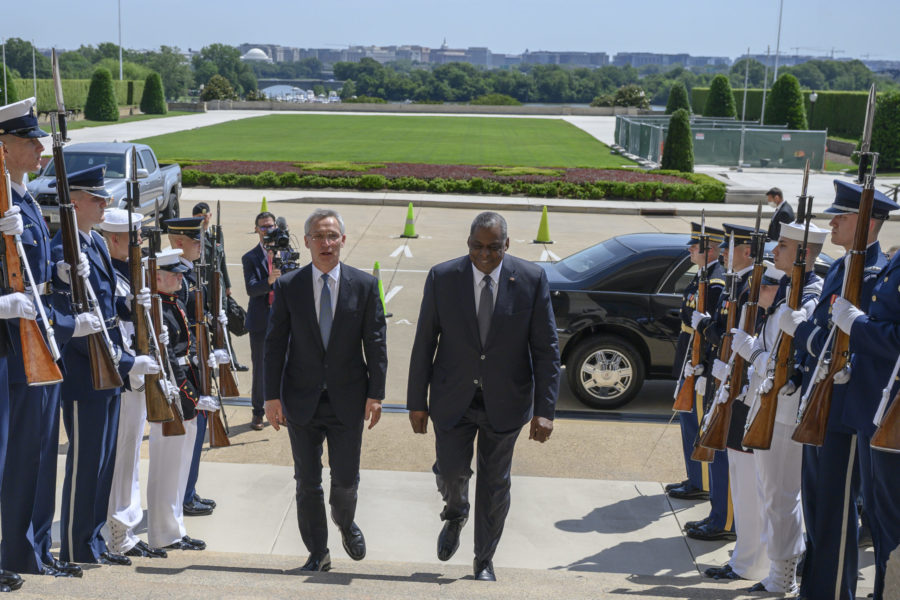U.S. forces are about halfway done with the planned withdrawal from Afghanistan as the U.S. and NATO pledge to continue their support for the country in new ways.
U.S. Central Command boss Gen. Kenneth F. McKenzie Jr. said June 7 that with so much progress already, “we will make the September deadline to complete the full withdrawal from Afghanistan.”
McKenzie also noted the U.S. will maintain an embassy in Afghanistan and will continue to support the Afghan forces, saying CENTCOM is “working now with friends in the region to establish” the capability to “go after al-Qaeda and ISIS from over the horizon from other locations in the theater.” This would be in addition to existing capabilities, such as the B-52s that are deployed to Al Udeid Air Base, Qatar, and aircraft carriers currently operating in the region.
The withdrawal is being conducted “in concert with our NATO allies and partners,” McKenzie said. Also on June 7, NATO Secretary General Jens Stoltenberg visited Defense Secretary Lloyd J. Austin III to prepare for the upcoming NATO summit later this month, which will focus largely on the future in Afghanistan.
During a brief appearance at the Pentagon, Stoltenberg said that even though the military mission in the country is ending, “we will continue to provide support to Afghanistan” with a continued civilian presence, continued funding for Afghan forces, and NATO is “also looking into the possibility of providing out-of-country training for Afghan forces,” Stoltenberg said.
Austin said the withdrawal process is “proceeding well” and that the U.S. “remains committed to assisting our Resolute Support partners as they, too, retrograde.”
Protecting key infrastructure in the country, such as the international airport in Kabul, to enable a sustained diplomatic presence is now a top priority. McKenzie said there are advanced plans for this but did not provide specifics. Stoltenberg also said NATO is looking at ways to help Afghan forces maintain the airport and other key locations.
